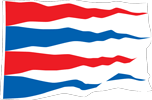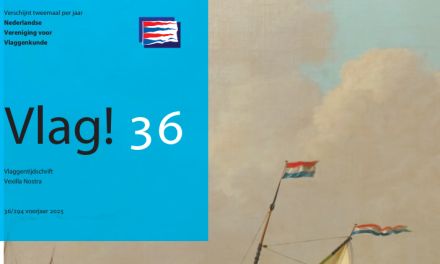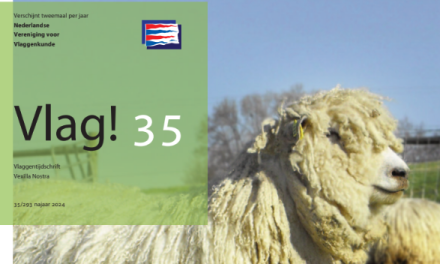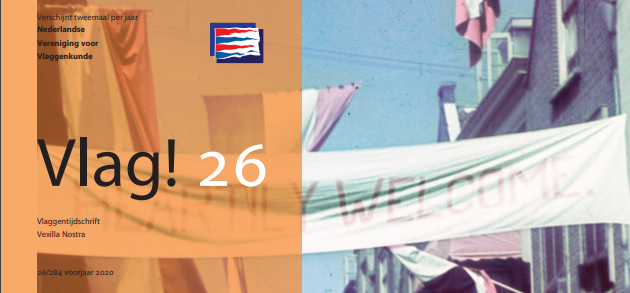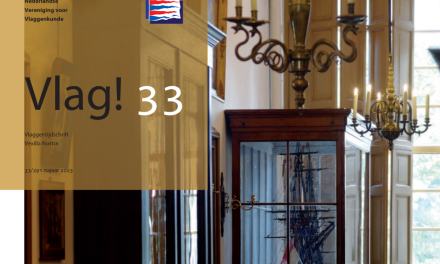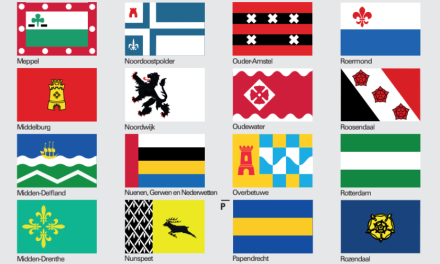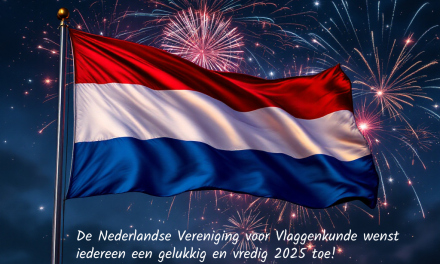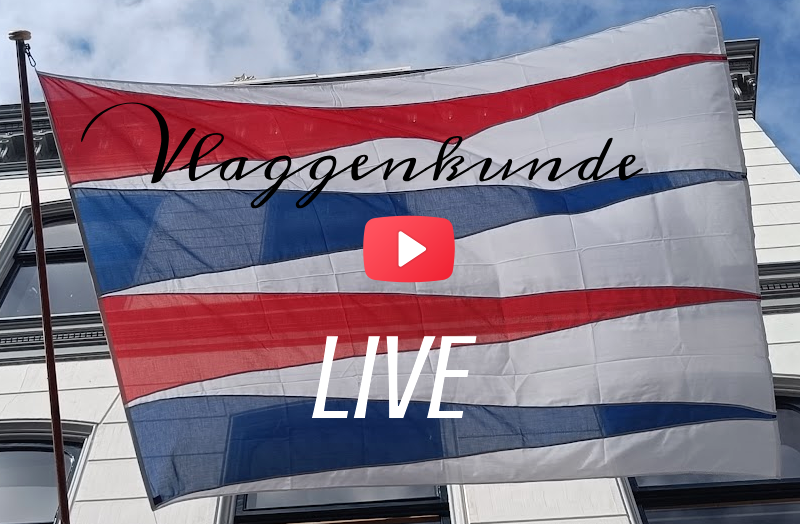The spring issue of the Dutch vexillological magazine Vlag! is now available online. The magazine is published in Dutch but an English summary can be viewed below.
If you want to receive our magazine as soon as it comes out, please register as a member. You will receive Vlag! 27 as soon as possible and every new magazine when it is published!
Articles in Vlag! 26
Flag news from all over the world
Cuba
Cuba’s parliament adopted a new law on the 13 th of July 2019 addressing the national symbols.
Under the new law, use of the national flag is curtailed stronger than before.
Bangsamoro (Philippines)
The muslim part of the Philippine island of Mindanao voted for independence in January 2018. On
the 23 rd of August 2019 it adopted a new regional flag in the Islamic colours of green, white and red.
Guam
The United States territory of Guam started a procedure to join the UNPO, the Unrepresented
Nations and Peoples Organisation. The US island retains it in 1917 adopted flag.
Bougainville
The population of this autonomous island has voted for independence from Papua New Guinea. The
flag will not change.
Dordrecht (Netherlands)
The municipality of Dordrecht has announced that its red-white-red flag will fly permanently from
the Grote Kerk, the city’s main church.
Heerlen (Netherlands)
The city of Heerlen has rediscovered its municipal flag. They intend to fly the flag in many places,
whereas before it was only displayed on the city hall.
Mississippi (USA)
Mississippi’s parliament has renounced its current state flag, which features the Confederate
Southern Cross flag. A new flag will be chosen later this year.
Westerwolde (Netherlands)
Westerwolde was created in 2018 by the merging of the municipalities of Vlagtwedde and
Bellingwedde, and has now adopted a flag featuring a wheat sheaf which was shown on a seal from
1316.
Minnesota (USA)
Minnesota’s flag is one of the most complicated in the United States of America. A parliamentary bill
has now been submitted for a new, simpler flag.
May 1940, white flags in Rotterdam
On May 10 th 1940 German troops occupied airport Waalhaven near Rotterdam. Resistance was
fierce. On May 13 th a German proposal for surrender was rejected. Subsequently, on May 14 th , the
centre of Rotterdam was completely destroyed by German bombs. The Netherlands capitulated, and
a delegation sporting a white flag negotiated with the Germans. A blood-spattered white flag from
the period has survived and is displayed in the Museum Rotterdam.
Orange-white-blue, from contender to symbol of oppression
Before the second World War the Netherlands often used an orange-white-blue flag, in honour of
the royal house of Orange-Nassau. In 1937 it was decided that the Dutch flag was red-white-blue.
The pro-German NSB (National Socialist movement) preferred the orange-white-blue flag as symbol
of the New Netherlands: during World War 2 all displays related to the royal house were banned,
except for the orange-white-blue flag. NSB posters featuring the orange-white-blue flag were used.
Dances of joy at the arrival of the allied forces
The Stedelijk Museum Breda is displaying an orange and red-white-blue dress with the text “BREDA
29-10-1944 VRIJ” (Breda 29-10-1944 free). The Dutch Liberation day (05-05-1945) is also included on
the dress. It appears the dress was used on those days.
Municipality flags during World War 2
Before WW2 there were only a handful of Dutch municipalities sporting a flag. Some were official,
others were not. The booklet “Wie Wat Waar” (Who What Where) yearbook 1941 by the Haagsche
Courant featured 77 municipal flags, some of which are still in use today.
Hiding of Dutch colours in Japanese internment camps
Not long after capitulation of the Dutch Indies on March 8 th 1942 Dutch nationals were interned in
enclosed parts of towns, with separation of men and women/children. In the female camps
embroidery was made in the Dutch colours of red-white-blue. These needed to be hidden from the
Japanese. The article details the story of a man who vigorously defended a pillowcase. After
liberation the man opened the pillowcase: it was found to contain a Dutch flag.
Flags from hotel “De Wereld” saved from the incinerator
On May 5 th , 1945, the Germans signed their capitulation in Wageningen, the Netherlands, in hotel De
Wereld. According to history the flags of the USA, the UK and Canada were on display in the room.
Sixty years later these flags were discovered in the municipal yard. The local council was for
destruction, but luckily they could be saved. Now they are in possession of the director of the
Achterhoeks Museum 1940-1945.
Naivety or falsification of history?
At commemorations at Dutch war cemeteries, respect is paid to the mainly Canadian victims. During
these proceedings the Canadian red maple leaf flag is flown. According to the author, this is
incorrect, as it should be the old red ensign of Canada, which served as the official ensign and
unofficial flag from 1892 to 1965.
The cross of Lorraine, symbol of the free French and the French resistance
During World War 2 the French nation consisted of three parts: occupied France, Vichy-France and
the Free French by general de Gaulle. The latter, known as the Forces françaises libres (FFL), were
refugees and colonial French citizens. Vice-admiral Muselier proposed the Cross of Lorraine as
symbol of the FFL, which was subsequently adopted. The red double cross included in the white band
of the French flag subsequently became the flag of Free France. Several flags of special forces were
derived from this flag.
Interested in more flag news and insights? Register as a member! You will receive Vlag! 27 as soon as possible and every new magazine when it is published!
